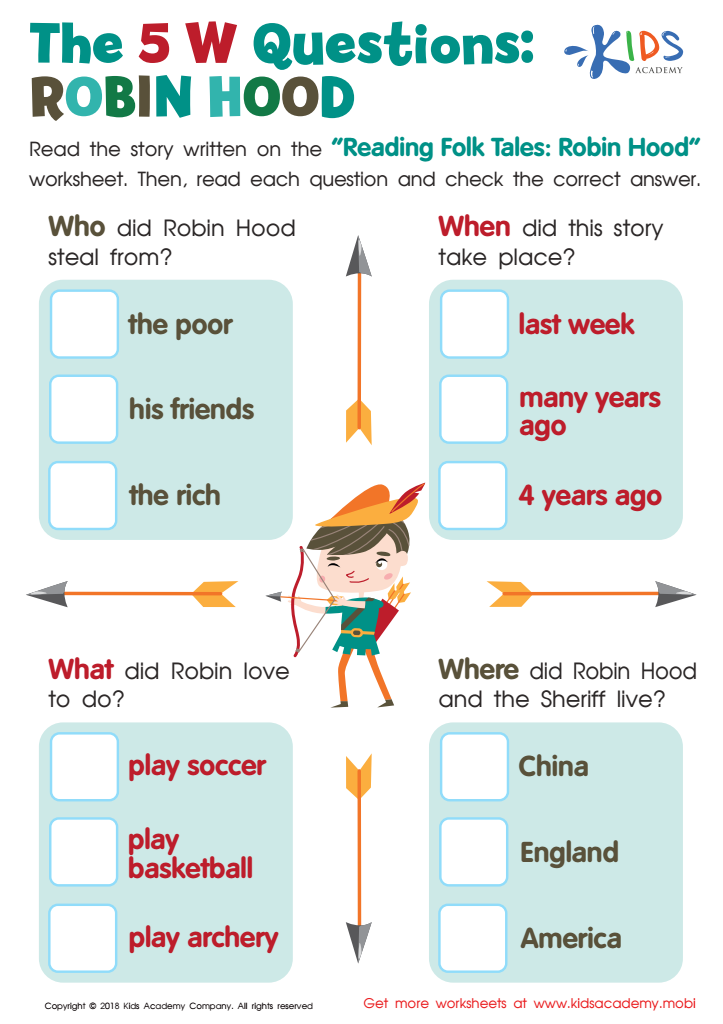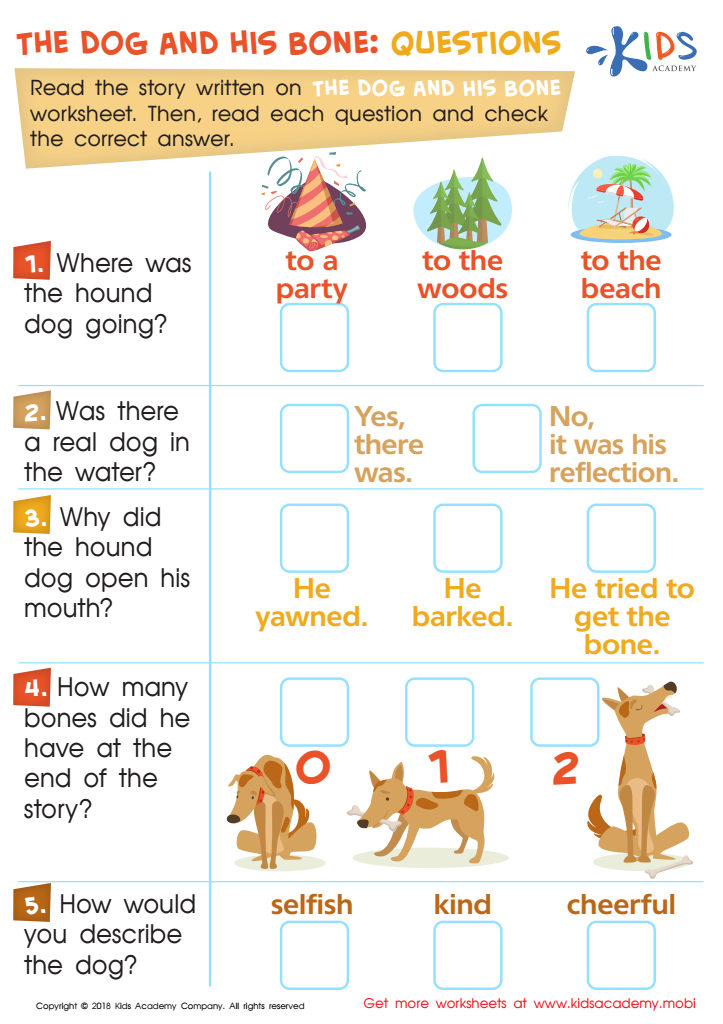
Reading Essential Activities for Grade 3
Worksheets
(1/12)
Idiom Worksheet

Make learning popular expressions a piece of cake with this idiom worksheet for 3rd grade!
Idioms are common phrases that we all know and love, but aren’t exactly literal. Open your child’s eyes to figurative language in a fun and easy way using the common expressions they already know and love!

The poem in this worksheet is simple and sweet, and your child will be able to relate to it easily, as it talks about an animal they probably love; cats! The poem contains 3 stanzas of four lines each. Ask your child if they know what a stanza is. If they don’t, teach them that a stanza is a group of lines in a poem, which are usually separated by a noticeable space. Now, read the poem aloud to your child and make sure they take note of the places where a stanza space is visible. Read the question at the bottom of the printout, and help them check the correct answer.

Most kids start writing poems from when they are very little. You can encourage your child to keep writing more by pasting their sweet poems on the fridge or on the walls of your house. The poem in this worksheet is about a swing. Your child probably loves playing on the swing in the playground, at school, or at the park. The poem talks about how the poet feels as he swings on a swing and the many things he sees. Read the poem to your child, and then read the questions at the bottom of the printout, and help them answer the simple questions.

Build your child’s ear for poetry while introducing him or her to poetic devices using this adorable rhyme in poetry worksheet!
Your child will read a cute poem about a cow, written by the famous poet Robert Louis Stevenson. Your child will form an appreciation for poetry and language after completing this rhyming worksheet!

What does your child know about rhyming words? Are they interested in poetry, perhaps, and take interest in the way some lines end in rhyming words? Teach your kids that rhyming words are words which sound similar. That is, when they are pronounced, they have similar sounds. Read the words written on each sail to your kids. Ask them to identify the ones that have rhyming words, and then help them check the sailboats.

Put your child’s reading comprehension to the test with this Robin Hood folktale worksheet!
Kids practice inferencing skills while being asked important details about the reading passage. Help your child to read between the lines to determine character motivation with this fun worksheet!

Stories are an awesome way that your child can express their personality by writing. You can encourage your kids to write by showing them short stories such as the one in this worksheet. Read the short story about Robin Hood slowly and carefully to your little ones. Make sure that they are paying good attention to the details of the story. If you need to, read it twice to them. After reading the story about Robin Hood’s Day Off, ask your kids the question below the story, and ask them to use their knowledge of the story to answer it.

Before setting off on this epic adventure with Robin Hood, make sure that your child has read and fully understands the story written on the ‘Reading Folk Tales: Robin Hood’ worksheet. From the story, your child must have gathered some lessons to be learned, as well as paid attention to details surrounding the story. The four questions in this simple printout all come from the story. Read each question aloud and help your kids check the correct answer.

The questions in this exercise are gotten from the story titled The Big Surprise. Before your child can answer these questions, they must have read, or have you read to them, the story of The Big Surprise. Read the story again to your kids; and this time, read it carefully, making sure they are taking in the details. After reading the story to them, read the questions in this printable pdf to your children, and ask them to tell you the correct answers. Help them check these answers among the options.

In this worksheet, your children will meet children who are just like them; Lin and Jeff. These two kids are in the supermarket, and are excited to buy groceries. They are with their big sister, Alisa. Make sure your kids are paying attention to the details of the story, including where the story takes place, and the character’s names. Read the story aloud to your kids, and read it a second time so they fully understand it. At the end of the story, ask them the questions at the bottom of the worksheet, and help your kids check the correct answer.

Before completing this simple worksheet, your child must be more than just familiar with the story of The Dog and His Bone. Read the story written on the Dog and His Bone printable pdf. Make sure that your child is carefully following your words. If possible, have them read the story aloud by themselves. Then, read the questions in this pdf and help your kids check the correct answer. There are five questions in the picture.

The questions in this exercise are gotten from the story titled The Dog and His Bone. Before your child can answer these questions, they must have read, or have you read to them, the story of The Dog and His Bone. Read the story again to your kids; and this time, read it carefully, making sure they are taking in the details. After reading the story to them, read the questions in this printable worksheet to your children, and ask them to tell you the correct answers. Help them check these answers among the options.


